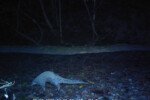KACHUGAON, July 16 (PTI): A planned conservation management strategy and its sustained implementation is the way ahead to restore Assam’s Raimona National Park, the latest addition to its seven national parks, to its once famed status of being the best managed forest in the country.
Ravaged for its rich forest produce, particularly timber, during the colonial era, hunting by erstwhile maharajas followed by rampant poaching during insurgency in the region in the last two decades of the previous century had caused immense ecological damage, but with the notification of the park in June 2021, efforts have been initiated to take it on the path of recovery, officials said.
The 422-square kilometre park in Kokrajhar district under the Bodoland Territorial Region forms a transboundary contiguous forest patch with the Phibsoo Wildlife Sanctuary and Jigme Singye Wangchuck National Park in Bhutan, and is a part of the Indo-Bhutan Transboundary Manas Conservation Area (TraMCA), recognised by both the nations in 2010.
Serving as a buffer to both Manas National Park in Assam and Buxa Tiger Reserve in West Bengal, the park comprises a major part of the earlier Ripu reserve forest, notified in 1893, which was then considered to be the country’s most scientifically managed forest area, divisional forest officer (Kachugaon Division) Bhanu Singha told PTI.
The forest was known to have the largest area under Sal trees (Shorea robusta) in South East Asia and tram lines were laid inside the forest in 1901 to carry the logs of these trees which were used mostly for making railway sleepers, he said.
The tram lines still exist in some parts of the forest while others have been removed and there are plans to keep these on display in a museum to be set up here in future for tourists, an official of the Bodoland Territorial Council said.
The area was also a favourite hunting ground of the Coochbehar rulers and in his journal ‘Thirty-Seven Years of Big Game Shooting’, Maharaja Niprendra Narayan Bhup Bahadur notes that in a few days’ sport in March 1900, his hunting party had shot 11 tigers, 11 leopards, one rhino, three water buffalos, five bears, one bison, two sambar, three hog deer and three pigs in the forests along the banks of the Saralbhanga river in the foothills of Bhutan.
It was, however, the long decades of Bodo insurgency when poaching by militants, destruction of anti-poaching camps and total absence of conservation law enforcement led to the destruction of the forest and its wildlife with the one-horned rhinoceros and tigers completely wiped out in the area, including in the neighbouring Manas National Park.
“The forests have witnessed large-scale destruction over hundred years and it was not due to the need but for the greed of the people,” Wildlife Trust of India’s project director of the Greater Manas Recovery Project Sanatan Deka told PTI.
The area once had a significant population of the one-horned rhinoceros which was completely wiped out during the insurgency years but they can be reintroduced and a success story can be scripted if “proper security measures are provided”, Deka said.
Famed for its herds of elephants crisscrossing the boundaries of the Greater Manas landscape, the restoration of the park is also crucial for mitigating human-elephant conflict, he added.
Singha said awareness programmes are regularly conducted among people of the surrounding villages so that they understand the importance the park can play in their socio-economic development.
Two Eco Development Committees (EDC), comprising residents of four fringe villages, have been also set up to help people, mostly women and youth, find alternative sources of their livelihoods and not depend on forest produce.
Forest land has been provided for the setting up of an eco-tourism project outside the park area and local youths are mostly involved in it, Singha said.
“We have set up small tents for tourists with all modern facilities along with providing local cuisine but our focus is on maintaining ecological balance of the area and ensuring that the biodiversity of the park is not harmed in any way,” Tunu Basumatary, a member of the project said.
The end of armed conflict and creation of the BTR have opened up immense tourism potentialities but it must be done in a sustained and responsible manner, the BTR official said.
The park with four administrative ranges, Eastern, Central, Sanfan and Aathiyabari, is also home to 29 species of mammals including the Golden Langur, found only here in the country, tiger, leopard, clouded leopard, wild dog, spotted deer, sambar deer, barking deer, along with more than 200 species of butterflies and 230 species of birds.







